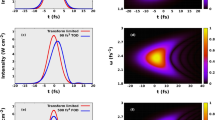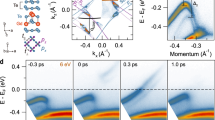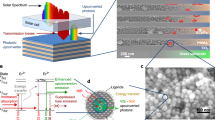Abstract
WE value the remarks of Drs. Edisbury, Taylor and Gridgeman1 on a new unit in photo-electric colorimetry2. Opinions do not seem at variance that measurements should be made at approximately the same optical density1, 2, that—provided the Beer-Lambert law be valid—the relation of the proposed unit W501 cm. to the usual E1%1 cm. can be expressed by : and that E (1%, 1 cm.) is certainly less cumbersome to print than E1%1 cm. Title and text of our letter2, however, should have made it clear that we had photo-electric colorimeters (absorptiometers) in mind. Though it was shown by Twyman and Lothian3 that 0·4343 is the best density for this type of instrument, it was also stated that "... we may use densities between 0·2 and 0·8 without any considerable loss of accuracy". This range covers easily the proposed half-value and adjacent auxiliary readings used for interpolating W501 cm,. An even wider range (0·2–1·2) is recommended elsewhere4 for an instrument other than ours. The statement1 that E (1%, 1 cm.) is merely a standard expression that does not carry the implication that one must measure the optical density of a 1 per cent solution in a 1 cm. cell may probably be correct, but not necessarily so, and does not seem to be endorsed unanimously ; for Guild5 inferred regarding accuracy in spectrophotometry that "... our terminology should be kept in as close correspondence as possible with the physical magnitudes actually handled in our experiments", strongly deprecating the use of derived magnitudes. Though the proposed half-value is inversely related to quantity, this need not impair its applicability ; for a similar magnitude, the half-value layer is a standard expression in X-ray technique6.
Similar content being viewed by others
Article PDF
References
Edisbnry, J. R., Taylor, R. J., and Gridgeman, N. T., Nature, 159, 777 (1947).
Koch, W., and Kaplan, D., Nature, 159, 273 (1947).
Twyman, F., and Lothian, G. F., Proc. Phys. Soc., 45, 643 (1933).
Glover, J., Goodwin, T. W., and Morton, R. A., Biochem. J., 41, 97 (1947).
Guild, J., Proc. Phys. Soc., 45, 659 (1933).
Pohle, E. A. and Chamberlain, W. E., "Theoretical Principles of Roentgen Therapy" (Lea and Febiger., Philadelphia, 1938).
Author information
Authors and Affiliations
Rights and permissions
About this article
Cite this article
KOCH, W., KAPLAN, D. Units and Useful Range in Photo-electric Colorimetry. Nature 161, 247 (1948). https://doi.org/10.1038/161247a0
Issue date:
DOI: https://doi.org/10.1038/161247a0



